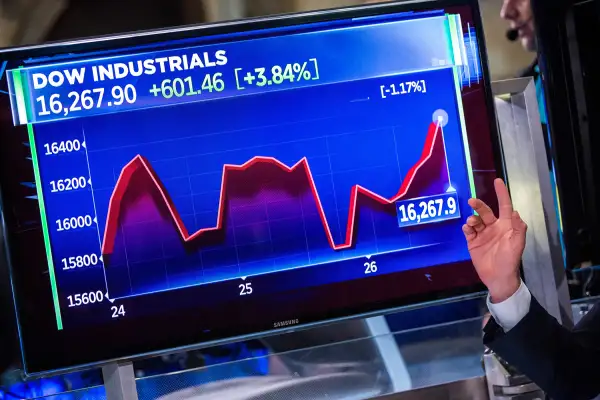What to Make of the Market Madness
Money is not a client of any investment adviser featured on this page. The information provided on this page is for educational purposes only and is not intended as investment advice. Money does not offer advisory services.

Finally. After six straight down days on Wall Street, stocks surged on Wednesday, with the Dow Jones industrial average gaining a stunning 619 points.
What was behind Wednesday's rally?
Several things. First, the Chinese government cut interest rates again in an effort to reinvigorate economic growth and restore confidence to that nation's sinking stock market.
That was followed by remarks from New York Federal Reserve Bank President William Dudley, who argued that in light of recent developments, the case for raising interest rates in September "seems less compelling...than it did several weeks ago."
Finally, the Commerce Department delivered some good economic news: Last month, factory orders for durable goods rose a better-than-expected 2%.
Why was this last bit of data so important?
The stock market often foreshadows the health of the economy six to nine months down the road. If equities were to slip into a bear market — they came close on Monday — investors would naturally begin to wonder if the U.S. economy is on the verge of another recession.
The fact that orders for expensive, big-ticket items are growing offers some reassurance that the economy is still on solid footing.
Why has the market been bouncing up and down so much in recent days?
Blame it on all the mixed signals investors are getting about the economy.
"You have the leading economic evidence pointing to the positive side," says James Stack, president of InvesTech Research, noting that consumer confidence, initial claims for unemployment, and growth in the consumer sector are all reflecting a rather rosy picture.
But from a technical stock market view, he says, "things are very negative." For example, market breadth—the number of stocks posting gains as a percentage of the overall market—has been deteriorating for some time, hinting that the bull market may be over.
As new bits of data or clues about the global economy come to light, investors are overreacting in both directions, which explains the volatility.
Does Wednesday's rally mark the end of this sell-off?
That's difficult to say, but many strategists think this downturn will fall short of becoming a full-blown bear market, defined as a 20% drop or more in stock prices.
"We think this is likely to end up being a correction," not a bear, says Liz Ann Sonders, chief investment strategist for Charles Schwab.
What will the bulls be looking for Thursday?
Follow-through. One day does not a rally make. If yesterday's 600-point gain is followed by a triple-digit loss, Wednesday's rally becomes almost meaningless.
What will the bears be watching Thursday?
China. For the past two days, policymakers in Beijing have announced stimulative moves including rate cuts to reassure investors. On both days, Wall Street responded with big moves higher in the morning, though on Tuesday the market's early gains were wiped out by late-day selling.
For years, Wall Street observers have been noting that investors have grown addicted to low interest rates engineered by the Federal Reserve. As far back as 2012, then Dallas Fed president Richard Fisher described artificially low rates as "monetary morphine."
The fear is that investors are now getting hooked on yet another set of low rates—this time China's.
